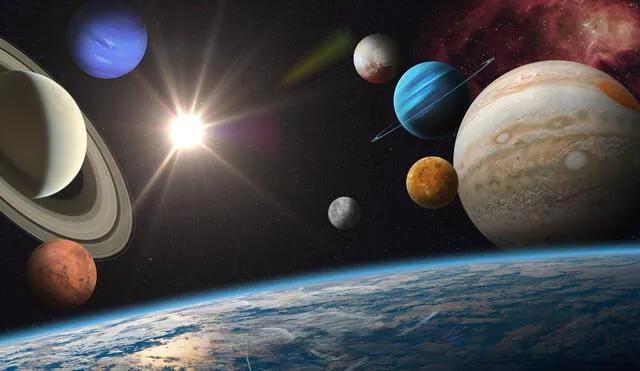Rare seven-planet alignment TONIGHT: Check out some viewing tips and what to expect
Tonight, February 28, 2025, offers a rare opportunity to witness a seven-planet alignment in the evening sky. Shortly after sunset, Mercury, Venus, Mars, Jupiter, Saturn, Uranus, and Neptune will form a celestial parade, visible across the horizon.

A spectacular celestial event is set to captivate skywatchers tonight, February 28, 2025, as seven planets—Mercury, Venus, Mars, Jupiter, Saturn, Uranus, and Neptune—align in a rare planetary parade. This extraordinary occurrence offers a unique opportunity to observe multiple planets simultaneously, a phenomenon not expected to recur until 2040. Whether you're an avid astronomer or a casual stargazer, understanding the optimal viewing times and conditions is essential to fully appreciate this cosmic display.
The alignment will be visible shortly after sunset, with the planets stretching across the evening sky in a gentle arc from east to west. While some planets will shine brightly and be easily spotted with the naked eye, others will require optical aids due to their distance and proximity to the horizon. Selecting an observation spot with minimal light pollution and an unobstructed view of the western horizon will enhance your viewing experience.

Seven planets to align tonight: How and when to watch rare planetary parade in US. Photo: Times of India.

ALSO SEE: Celebrate National Egg McMuffin Day with $1 Sandwiches and new breakfast offerings on March 2
Optimal viewing times and locations
In Lima, Peru, the sun is expected to set around 6:30 PM local time. Approximately 30 minutes after sunset, as twilight fades, the planetary parade will become visible. Mercury and Saturn will appear low on the western horizon and may be challenging to spot due to their closeness to the sun's glare. Utilizing binoculars or a telescope can aid in detecting these elusive planets. Venus, the brightest of the group, will be more prominent and easier to locate, followed by Jupiter and Mars, which will display a distinct reddish hue. Uranus and Neptune, being farther away, will also necessitate optical assistance for clear observation.
To maximize the chances of witnessing the full lineup, seek out locations with dark skies, such as rural areas or elevated terrains away from city lights. Ensuring a clear view of the western horizon is crucial, as obstructions like buildings or trees can impede the sighting of planets positioned low in the sky. Remember to allow your eyes to adjust to the darkness and avoid looking directly at bright light sources, which can diminish night vision.
Safety and observation tips
When preparing to observe planetary alignment, it's important to prioritize safety. Never attempt to view the sun directly through binoculars or telescopes, as this can cause severe eye damage. Wait until the sun has fully set before using any optical instruments. Additionally, check local weather forecasts to ensure clear skies, as cloud cover can obstruct the view of the planets. Dressing warmly and bringing along a star map or using a stargazing app can enhance the experience, helping you identify each planet's position in the sky.
Beyond its visual splendor, this planetary alignment holds astrological significance. With several planets congregating in the sign of Pisces, individuals may experience heightened emotions and introspection. This alignment is believed to influence personal growth and relationships, prompting many to reflect on their emotional well-being and interpersonal connections. While interpretations vary, the event offers a moment to contemplate the broader cosmic influences at play in our lives.











